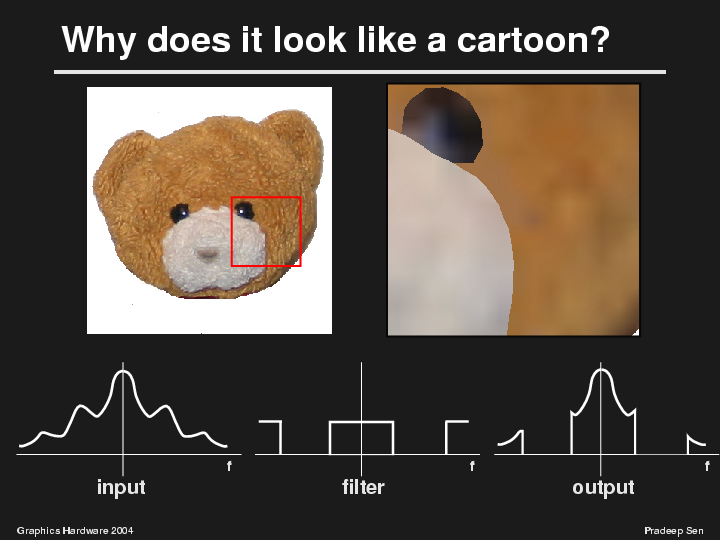
A little thought shed some light on the problem. Our input image has some given frequency distribution, which I show here on the left. Because we generate the color samples for our representation by averaging down the original image, we can think of the process as acting as a low pass filter. In addition, we artificially embed the high-frequency edge information by adding the silhouette map, and thus add a sort of high-pass filter to the process.
So when we pass our input through a filter with low and high-frequencies but no mid-range, we get an output that looks like this on the right. Our vision system automatically recognizes something with low and high frequencies but no mid-range as a cartoon, because if you think about it, cartoons are typically made up of black outlines (which provide the high-frequencies) around regions of relatively constant color (the low frequencies).
This observation got us thinking about interesting potential future work...